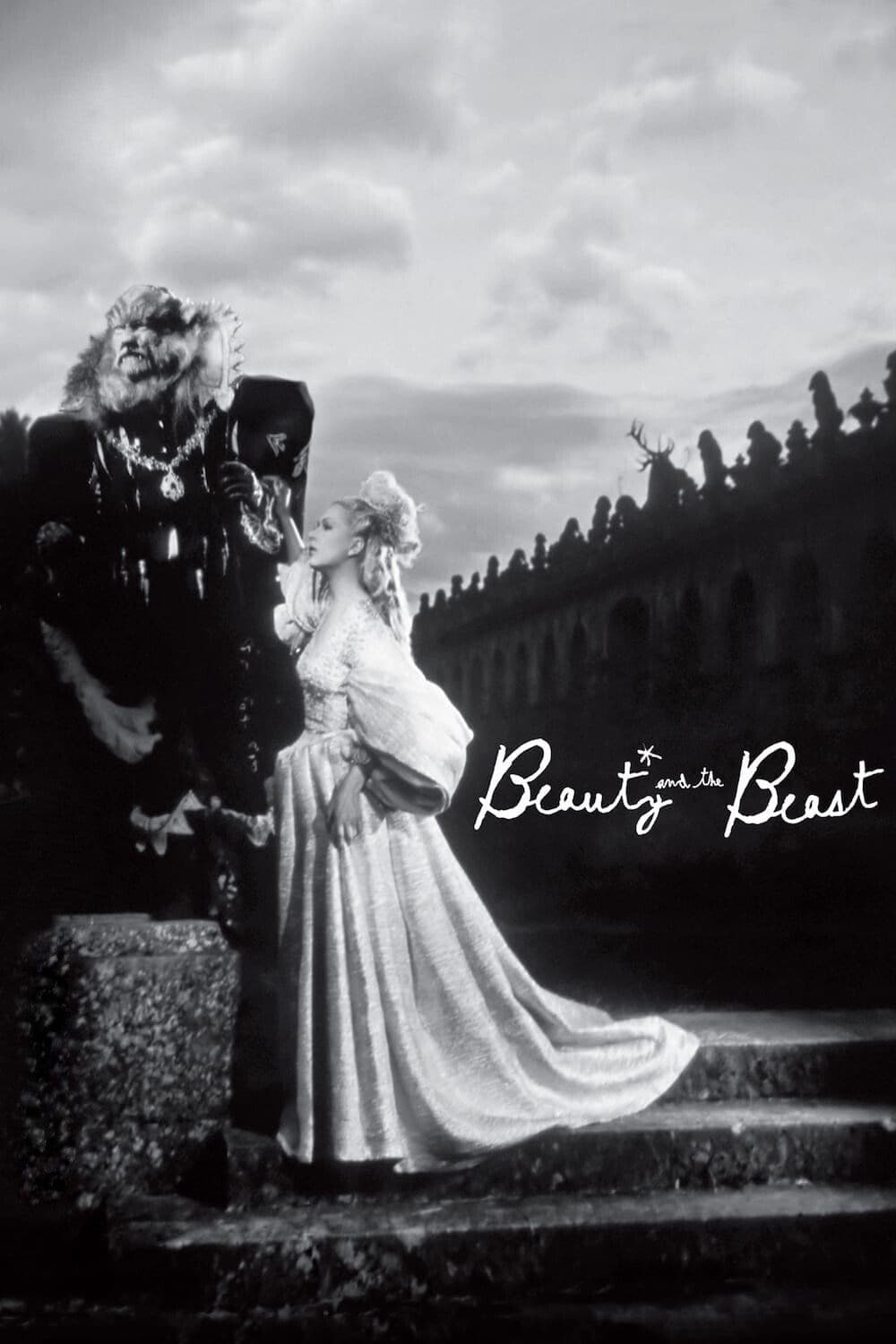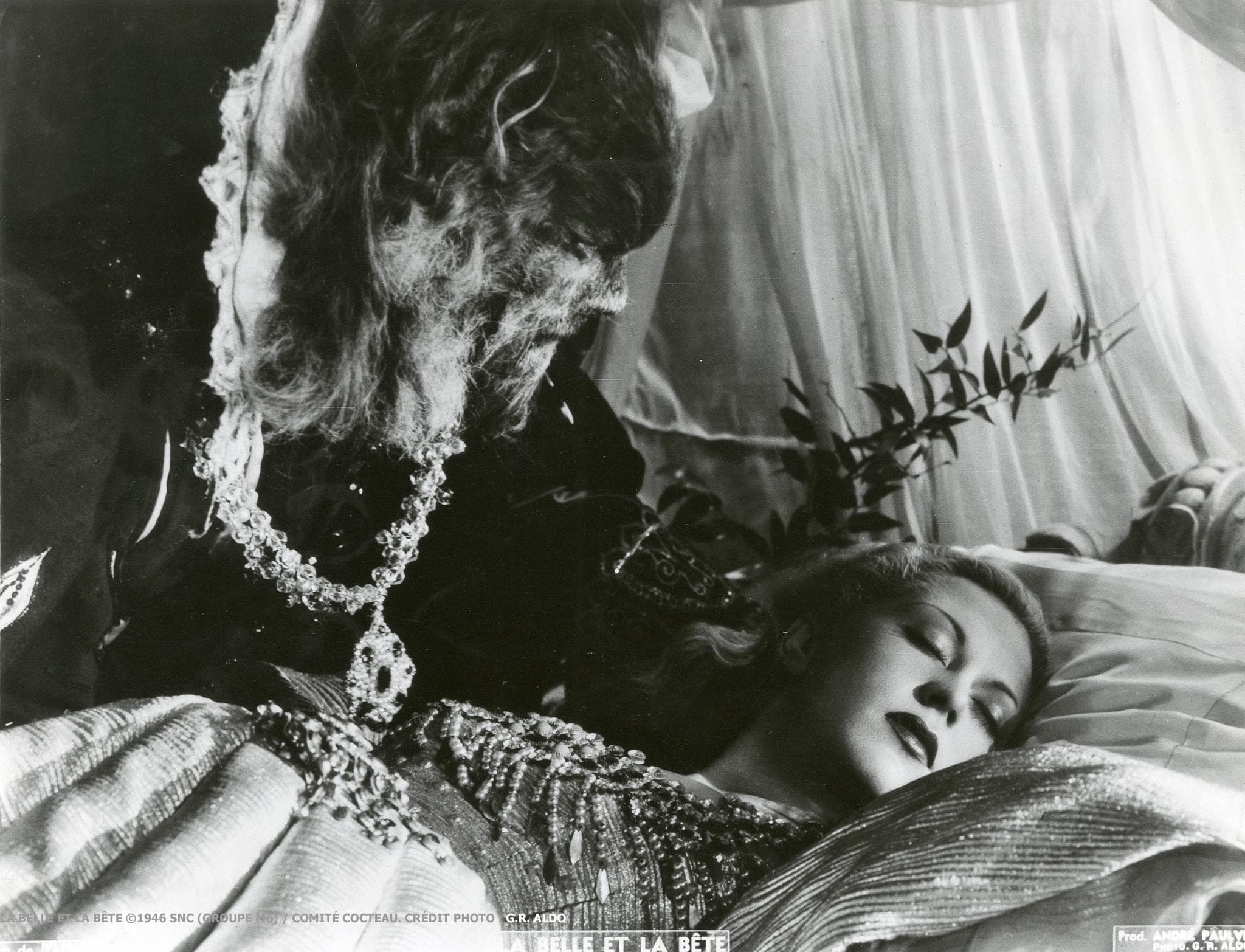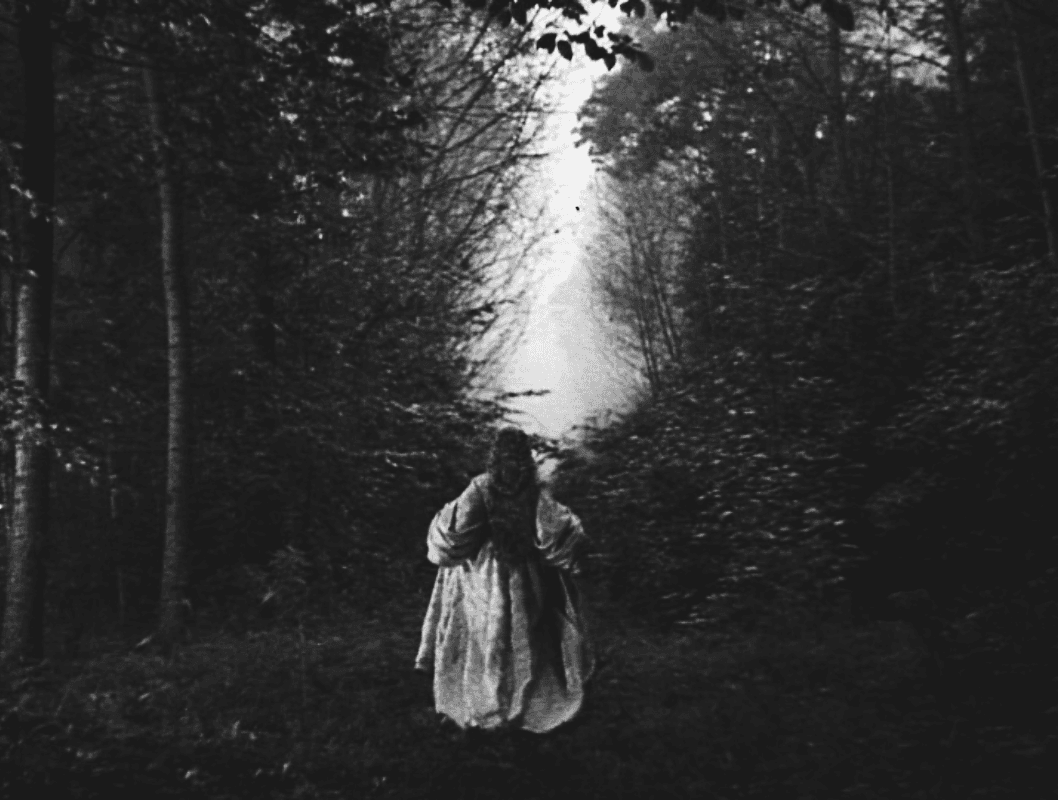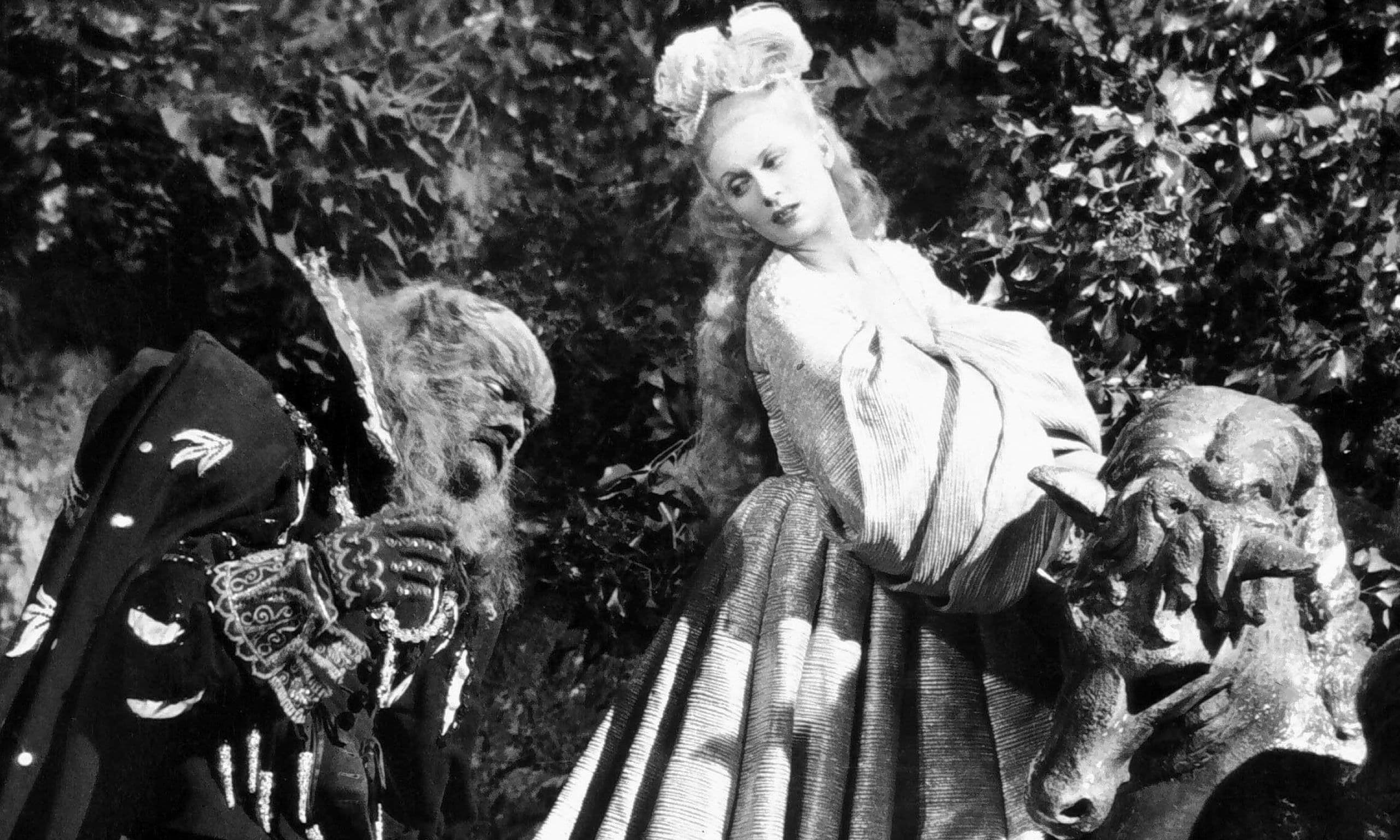
Beauty and the Beast
1946
Rate this movie
Average: 0.00 / 5
(0 votes)
Directors
Jean Cocteau reinterprets Beaumont's celebrated fairy tale in a dreamlike and choreographic vein. Not a simple transposition, but a true visual meditation on the essence of metamorphosis, love, and perception, infusing the narrative with a lyricism that only the seventh art, shaped by such an eclectic and visionary mind, can achieve. Cocteau's approach is light-years away from linear or didactic storytelling; it is an immersion into the archetype, a choreography of symbols and suggestions that transcend the written word, permeating every frame with an almost supernatural grace.
Unsurprisingly, the result is a cinematic masterpiece that makes a clean sweep of neorealist baggage and winks at surrealism and dadaism. While Italy and much of Europe were still grappling with the scars of post-war reconstruction, reflecting the raw reality of rebuilding through the dry and often disenchanted lens of neorealism – consider the visceral immediacy of Rossellini or De Sica – Cocteau, with an act of audacious aesthetic deviance, performed a true tabula rasa of that cinematic pragmatism. His vision was a deliberate rejection of the grit of reality, embracing instead the polished surface of dreams and the internal logic of the subconscious. The film not only "winks at" but fully immerses itself in the aesthetic currents of surrealism and dadaism, drawing upon their fascination with the irrational, the subconscious, and the deconstruction of bourgeois logic. Cocteau, who was himself a central figure in the Parisian artistic ferment of the 1920s and 30s – a poet, playwright, filmmaker, and all-around intellectual, friend of Picasso, Satie, and Stravinsky – intuited and materialized a beauty that is not of this world. In his enchanted castle, the hands of the candelabras reach out in an unsettling and sublime welcome, marble busts spy with living eyes, and every piece of furniture seems to pulse with a life of its own, revealing a hidden, almost animistic, dimension of matter. It is a cinema that breathes the air of André Breton and Man Ray, not out of mere emulation, but from a profound affinity with the idea that art must break the chains of reality to explore the dizzying heights of the imaginary, revealing deeper truths through allegory and the fantastic. The film thus becomes an almost hypnotic experience, an invitation to lose the boundaries between waking and sleeping, between logic and madness, in a short circuit of pure and disturbing beauty.
The story is that of Belle, the fourth daughter of a wealthy gentleman who falls into ruin. But the fairy tale archetype, though maintained in its essential structure, is here sublimated through the psychology of the characters and subtle social critique. Belle is not a passive figure, but a young woman whose purity of spirit and ability to see beyond appearances distinctly set her apart from the cynicism and superficiality of the world around her, primarily that of her greedy and disenchanted sisters and brothers.
The girl dedicates herself to humble work while her siblings lead the same dissolute life. This dichotomy between Belle's silent virtue and her family's ostentatious dissoluteness – a fairy tale topos that Cocteau elevates to a clash between materialism and spirituality – serves to reinforce her uniqueness, making her the only one capable of performing the ultimate sacrifice. Her self-abnegation is not mere submission, but a moral force that will lead her to a higher understanding of love and beauty.
Belle must then offer herself as a prisoner to the Beast in his castle to save her father. It is here that Cocteau's genius and Jean Marais' unforgettable performance – the director's fetish actor and life companion – merge into an iconic and profoundly melancholic image. Cocteau's Beast is not merely an external monster, but the embodiment of inner suffering, a prince condemned to conceal his humanity beneath a bestial and sorrowful mask. Marais' meticulous and, at the time, exhausting transformation, with the application of prosthetics and furs that required hours of makeup, is not a mere special effect but becomes an integral part of the narrative: the animal skin covering him is the symbol of his condemnation, but also the veil behind which his deepest sensitivity is hidden. The roar he emits, a heartbreaking cry rather than a menacing one, and the wisps of smoke emanating from his nostrils, evoke not terror, but a tragic solitude.
A great love will then be born, beyond all time and human measure. It is not love at first sight, but a slow, almost imperceptible process of recognition. Belle learns to see with her heart, beyond the bestial shell, discovering the gentle and tormented soul hidden within. It is a love that challenges prejudices and conventions, a hymn to inner beauty and the strength of compassion. The film suggests that the true transformation is not that of the monster into a prince, but that of Belle's perception, who, through her pure vision, redeems the Beast, revealing his true, noble nature. It is a universal lesson on love's ability to transcend appearances and reveal the other's most authentic essence.
The production design and cinematography are meticulously crafted, thanks to the artistic contribution of set designer Christian Bérard. But the pulsating heart of this visual magic resides in the meticulous care for every production design and photographic detail, elevated to a sublime art form thanks to the brilliant contribution of set designer Christian Bérard and the luminous mastery of cinematographer Henri Alekan. Bérard, an internationally renowned painter and fashion illustrator, celebrated for his ability to infuse poetry and mystery even into the most common objects, brought to life a castle that is itself a character: not a simple dwelling, but a labyrinth of chiaroscuro and visual deceptions, where the walls seem to breathe and statues conceal a restless soul. His aesthetic, often defined as "dreamlike baroque," manifests in the decadent opulence of the interiors, in the luminescent roses that seem to pulse with a life of their own, and in that sense of intrusion into an ancient and forgotten world, almost a Renaissance tableau vivant distorted by a surrealist filter.
Alekan, for his part, did not merely illuminate, but sculpted light, transforming it into an essential narrative element. His black and white, far from documentary-like, is of astonishing tonal richness, steeped in dramatic contrasts that emphasize the aura of mystery and the ambivalence between the Beast and the man. The mists enshrouding the forest, the play of light on Belle's garments, the almost ethereal glow that at times pervades the castle: every shot is a living painting, a homage to the Flemish masters and their ability to make the invisible tangible. It is the triumph of artisanal illusion, an era when special effects did not depend on computer graphics but on human ingenuity, on the patient construction of atmospheres through mirrors, smoke, forced perspectives, and a skillful use of lenses. It is said that Cocteau, to achieve the effect of Belle gliding ethereally through the corridors, used dollies and diffused lighting that almost suspended her in the air, bestowing upon her an unearthly grace, a solution reminiscent of the floating spirits in his later films of the Orphic Trilogy. This meticulous craftsmanship is not a mere stylistic embellishment, but the vehicle through which the film transcends the fairy tale narrative to become a profound exploration of beauty, monstrosity, and their inseparable relationship.
A work suspended between dream and enchantment, a cornerstone of the seventh art. Its influence is palpable not only in fantastic cinema to come, but in every artistic expression that dares to challenge the boundaries of reality to explore the most intimate truths of human existence. From Guillermo del Toro, who cited Cocteau as an inspiration for his fairy tale approach, to contemporary directors seeking a visual aesthetic that is itself narrative, Cocteau's "Beauty and the Beast" remains a beacon. It is a film that continues to enchant and provoke thought on the nature of beauty, the redemptive power of love, and art's capacity to create worlds that, though not real, are truer than truth itself. Its resonance is eternal, a sublime admonition to always look beyond the veil of appearances.
Country
Gallery





Featured Videos
Official Trailer
Comments
Loading comments...